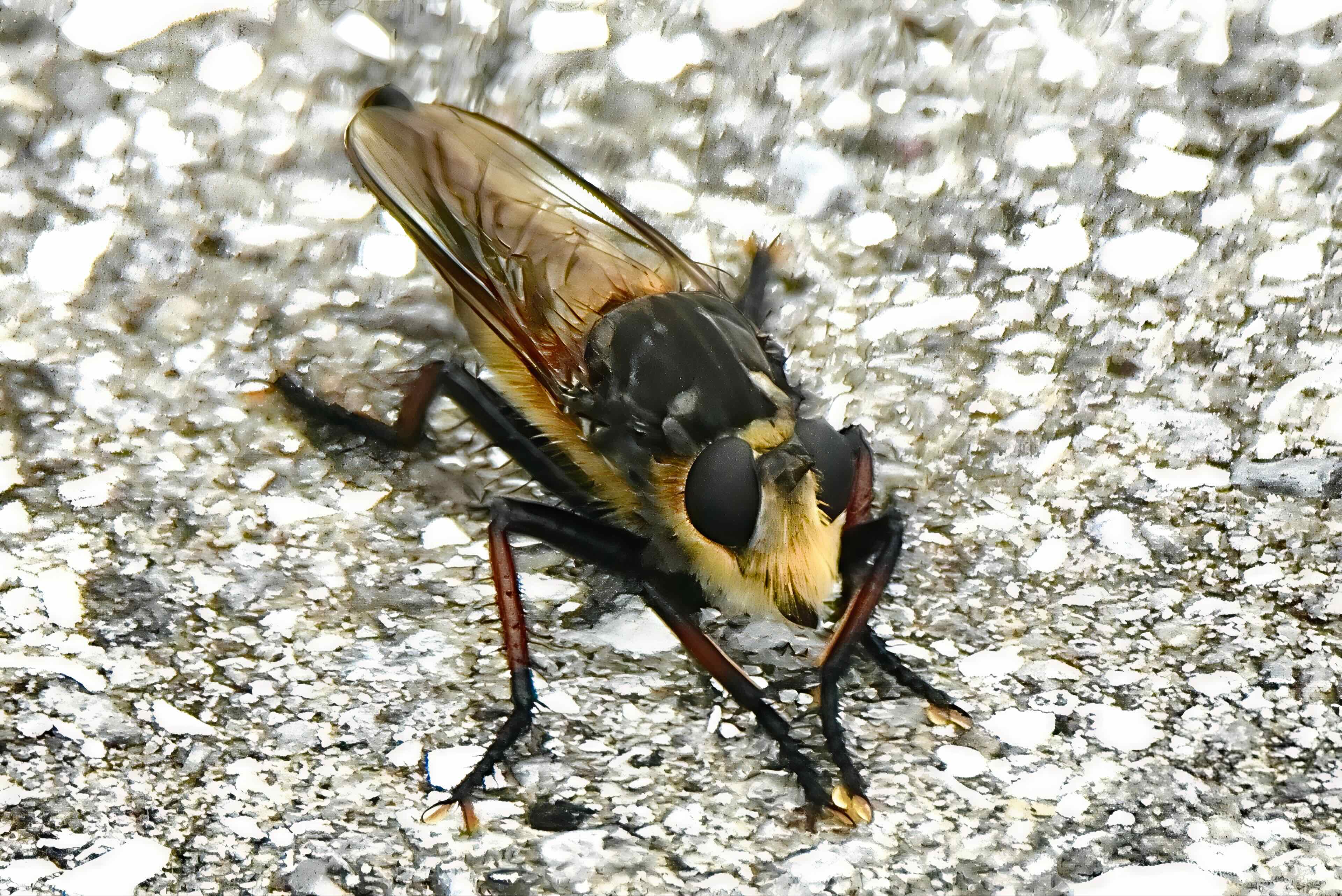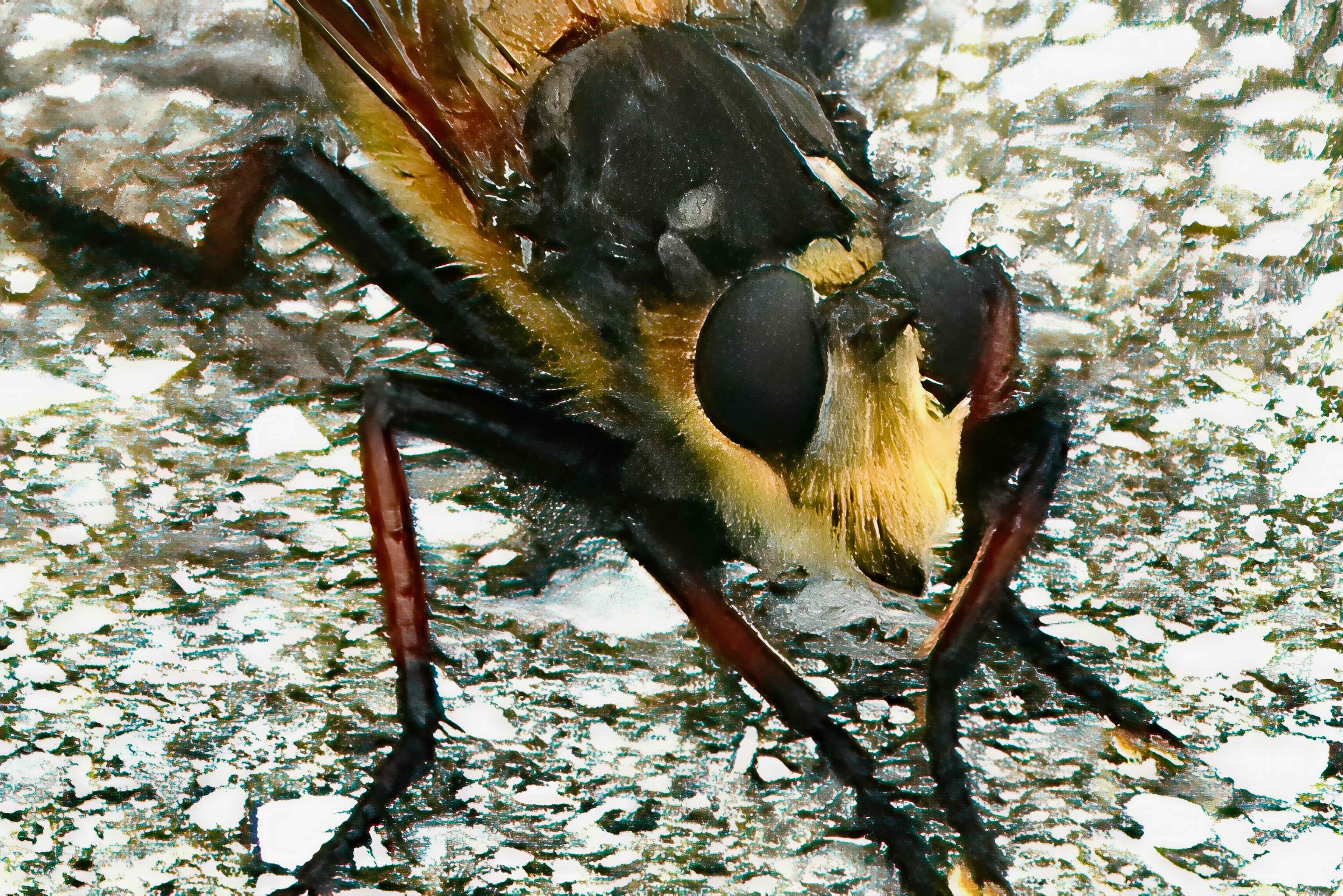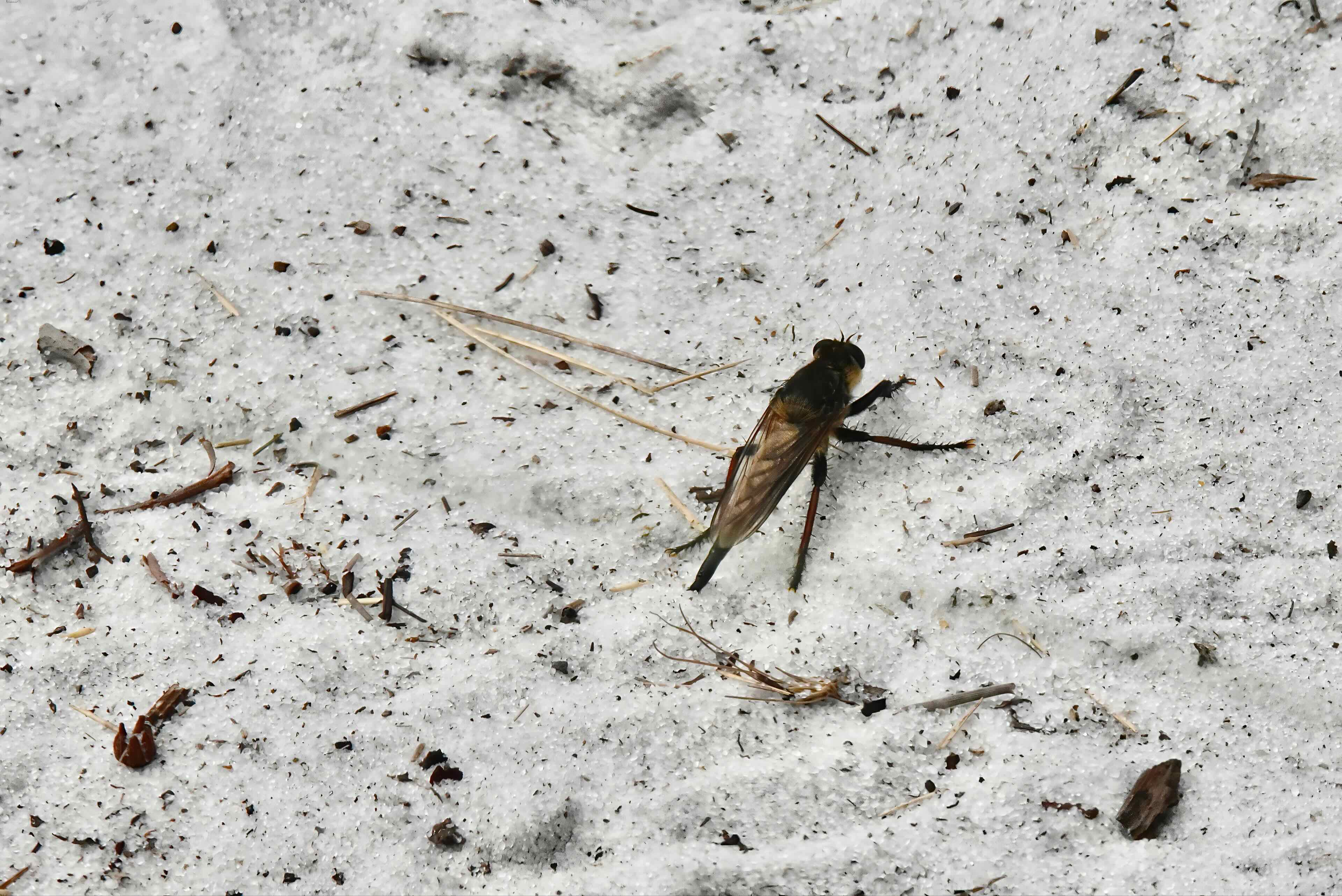
White sand marauder robber fly, photographed at Pondhawk Natural Area, Boca Raton, Palm Beach County, in October 2024.
With those big eyes and furry face, you might think you’re looking one of the members of the rock group ZZ Top*. At least that’s what came to our mind as we studied the above photo.
It’s actually a white sand marauder, one of the more common robber flies found in Florida.
Which brings up the question: what’s a robber fly? Answer: the bad asses of Diptera, the absolutely massive taxonomic order of flies. A followup question: what makes them bad asses? Answer: they’re predators that will attack prey its size or even larger. Fearless. Voracious. Bad asses.
They’re known to take on bees and wasps, spiders, dragonflies and grasshoppers. Even hummingbirds have been the target of robber flies; the birds probably get the better of these encounters but it tells you how audacious robber flies can be. They’re no threat to us humans as long as we give them proper respect and don’t mishandle them.
Our guy, the white sand marauder, Proctacanthus fulviventris, gets his name from his habit of hanging around the white sands commonly found in Central and South Florida. Like robber flies generally, the white sand marauder likes dry, open spacies, making them especially conspicuous to hikers. They’re less frequently spotted in North Florida and the Panhandle.
It’s one of 111 robber fly species verified to be living in Florida (there are 17 additional species believed to be here but unverified as of yet).
One other thing to note about the photos on this page. They’re of two individuals both spotted along the trail in Pondhawk Natural Area during the same hike, one on the concrete portion of the trail, the other on sand. Most white sand marauders have black femurs; both of these guys are the less-common red femur variation.
It’s hard to be 100 percent certain, but it appears that the marauder in the lower right photo is a female oviposting, or laying eggs in the sand.
More about robber flies generally: as of this writing there are 7,003 species of robber flies in the world that have been identified and described. They’re found on every continent sans Antarctica, as you might expect. There are 1,000 species found in the United States.
They are noted for their voracious appetites and willingness to attack prey their size or larger. They’ll perch on a spot that’s dry, open and sunny, waiting for breakfast, lunch or dinner to wander by. And when they do, they’ll launch out and attack, grabbing their target with their spine-laden legs (easily seen in our photos).
Once secured, they’ll use their knife-like proboscis to inject their prey with a saliva that’s a mix of neurotoxins that paralyze their victim and proteolytic enzymes that essentially liquifies their innards. The robber fly then returns to his roost and enjoys a nice meal of bug-guts soup. Yum!
As larvae, robber flies live in the ground or in decaying matter. Like their parents, young robber flies are predators, feasting on eggs, other larvae or soft-bodied insects.
The life cycle of robber flies can be as short as a year or as long as three. There are theories that the lifespan of robber flies in warmer climes tend to be on the shorter end.
Most robber flies have tough-guy common names — members of Proctacanthus are known as marauders.. Other genera are called assassins, ruffians and lionflies. But there are a few with less intimidating names, including the pixies, and our personal favorite, Pseudorus distendens, the Mexican fancyfoot.
The white sand marauder is a member of Asilidae, the family of robber flies. We’ve also seen it spelled white-sand marauder.
*If you’re of a certain age, you’ll remember ZZ Top’s signature look that included hats, sunglasses and long blonde beards. Although one of the original members has passed, the band is still performing, 50-plus years after getting together.
Pondhawk Natural Area



